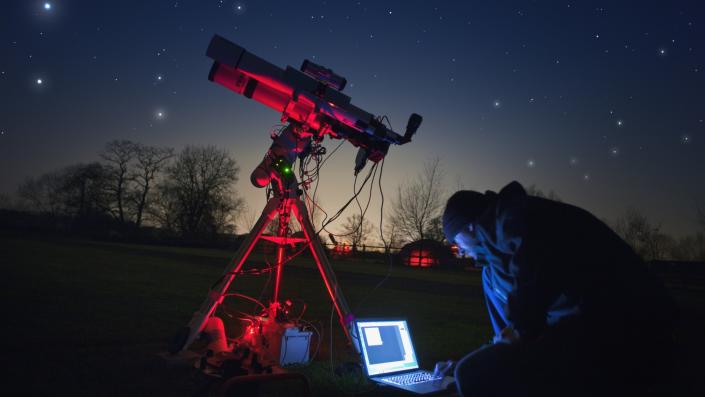Almost anyone can become an amateur astronomer. What will you … – Yahoo News

Want to become a published astronomer? All it takes is a spare telescope, or at least a decent internet connection, and plenty of patience.
At one time, all fields of science were performed by amateurs — usually wealthy European men who wanted a new hobby. So they made a telescope, a microscope or a sailing expedition themselves and went off to explore the wonders of the universe.
But starting about a hundred years ago, science actually became a profession, with specific job titles, expectations of academic achievement and systems of organizing practitioners. When it comes to almost all areas of science, if you don’t have the extensive, rigorous training under your belt, you’re unlikely to be taken seriously.
Related: NASA needs your help finding alien worlds
But astronomy, perhaps the oldest of the scientific professions, has always had a soft spot for amateurs. Nonprofessional astronomers are welcomed at conferences, are encouraged to publish in prestigious journals and are capable of making truly game-changing observations of their own.
And following the example of Filipp Romanov, a Russian amateur astronomer who has made quite the name for himself, you, too, can contribute to the field.
Inside the archives
Data miningOne reason amateurs can make a dent in modern astronomy is that it’s still very much a visual science. Many papers written by professionals in the field amount to “check out this weird thing we saw when we looked through our telescope.”
Alongside that is the fact that the universe is quite large. Since the invention of the photographic plate over a century ago, astronomers have been cataloging as much of the sky as possible, at as many wavelengths as possible, with as much resolution as possible. This has resulted in a vast wealth of data that all the combined efforts of every living astronomer couldn’t possibly wade through. A survey with a single target yields mountains of data that are of no interest to the primary observers, but that doesn’t mean the data are useless.
Romanov had absolutely no formal training in astronomy, but that didn’t stop him from combing through archival images taken with the Palomar Observatory in California. Deep in the archives, he found a possible dwarf nova that a sky survey from the observatory spotted — but ignored — in 1958. He also found two supernovas and 10 planetary nebula candidates.
Data mining
But it’s not just archives that contain hidden astronomical gems. Modern surveys, like Pan-STARRS, generate outright gobs of data as they relentlessly scan large portions of the sky night after night. These enormous survey telescopes are designed as instruments of discovery: By opening up the sky to as many astronomers as possible, those astronomers can follow their curiosities and explore the universe to their hearts’ content.
But again, there are only so many trained, professional astronomers, and they’re going to miss a lot. That’s why many surveys open up public competitions, like the International Asteroid Search Campaign and the Great Supernova Hunt. It’s like Easter egg hunting, but for nerds — and the reward is the chance to name an object if you discover it first, have the International Astronomical Union record your achievement for posterity, and possibly get your name on a paper describing the result.
Such campaigns have allowed amateurs like Romanov to find new asteroids and supernovas.
The transient sky
One of the hottest trends in modern astronomy is the search for transients, or brief astronomical events. Transients are extraordinarily hard to detect because you have to pass over the same patch of the sky again and again in hopes of catching something interesting before it goes away forever. Such transients can include variable stars, novas and supernovas, and high-powered events, like gamma-ray bursts.
Romanov managed to directly observe over 80 transient events. To do this, he didn’t use archival data; he generated his own by requesting time on public-access remote observatories, like those of the iTelescope.net network.
Related stories:
— ‘Vanishing stars’ citizen-science project opens the skies to the public
— Amateur astronomer wins ‘cosmic lottery’ with 1-in-10-million supernova shot
— Amateur astronomer spots 34 paired-off ‘failed’ stars in brown dwarf project
With remarkable dedication, Romanov made many important observations: following the outbursts of several novas and supernovas, measuring the afterglow of a gamma-ray burst, monitoring the rotation of an asteroid, and capturing microlensing events.
Understandably, amateur astronomers like Romanov show an uncommon level of dedication, surpassing that of even some professionals. But his work demonstrates that it’s possible to participate in the great astronomical exploration of our universe — all it takes is a little patience and a willingness to dig deep into the sky.
Follow us on Twitter @Spacedotcom or on Facebook.




